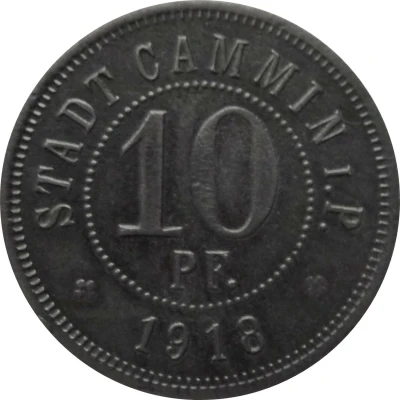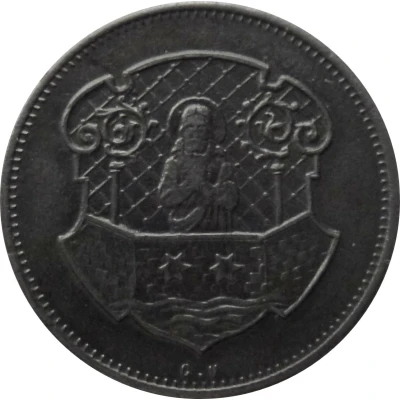


© Willem63 (CC BY-NC-SA)
10 Pfennigs - Cammin
1918 year| Iron | 3.1 g | 21.0 mm |
| Issuer | City of Cammin (Prussian province of Pomerania) |
|---|---|
| Type | Standard circulation coin |
| Year | 1918 |
| Value | 10 Pfennigs (10 Pfennige) (0.10) |
| Currency | Mark (1914-1924) |
| Composition | Iron |
| Weight | 3.1 g |
| Diameter | 21.0 mm |
| Thickness | 1.4 mm |
| Shape | Round |
| Technique | Milled |
| Orientation | Medal alignment ↑↑ |
| Demonetized | Yes |
| Updated | 2024-10-04 |
| Numista | N#329517 |
|---|---|
| Rarity index | 95% |
Reverse
Pearl rim, coat of arms with John the Baptist
Lettering: C.V.
Edge
Plain
Interesting fact
The 10 Pfennigs - Cammin 1918 coin from the City of Cammin (Prussian province of Pomerania) made of Iron weighing 3.1 g is interesting because it was issued during a time of economic and political turmoil in Germany. The coin was minted in 1918, a year marked by hyperinflation, political instability, and the end of World War I. Despite these challenges, the coin remained in circulation and was used as a means of exchange among the people of Cammin and the surrounding region. Its iron composition also makes it a unique and rare example of a coin made from a non-precious metal, highlighting the resourcefulness and adaptability of the people who produced it.